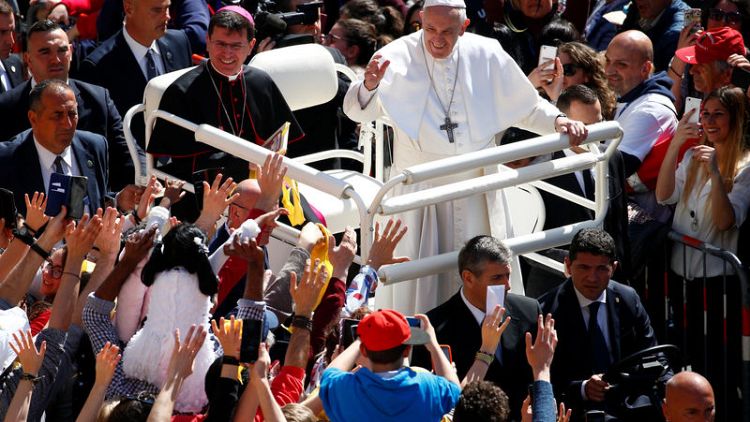LORETO, Italy (Reuters) - Pope Francis on Monday visited a small stone structure that some Catholics believe was the house of the Madonna, mother of Jesus Christ, and that was miraculously flown by angels from the Holy Land to the Adriatic coast.
Francis travelled to the city of Loreto, site of one of Italy's most visited religious shrines, where he said a Mass, comforted many sick people, and signed a paper he has written on the role of young people in the Church.
The document, known as a "apostolic exhortation," is his assessment of a month-long synod of bishops at the Vatican last year.
The document, now being translated from the original Spanish, is expected to tell young people that they should not be obsessed with doctrinal minutiae but blend the Church's rules with social activism to help those in need. It is due to be published soon.
According to popular tradition, the tiny house at Loreto was where the Madonna lived in Nazareth and where, according to the Bible, an angel appeared to her to tell her she would give birth to Jesus. Monday is a religious holiday, the Feast of the Annunciation, marking this event.
The house, known as the Holy House of Loreto or the Flying House of Loreto, was miraculously saved by angels so it would not be destroyed after Christian crusaders were expelled from Palestine in the 13th century, according to the tradition.
A more earthly explanation, also offered on the shrine's website as an alternative, is that a wealthy family of merchants who ruled over what is now part of Greece and Albania and whose surname was Angeli (angels), had the stones brought over by ship.
The house is now part of a large basilica that attracts hundreds of thousands of pilgrims each year.
In his address to crowds in the square outside the shrine, Francis did not mention the tradition but said Loreto was a place of spirituality, faith and devotion.
(Reporting by Philip Pullella; Editing by Frances Kerry)
